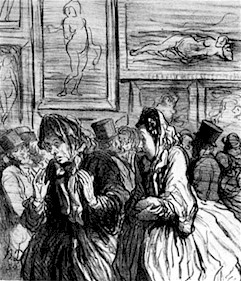The Museums Portal
A museum is an institution dedicated to displaying and/or preserving culturally or scientifically significant objects. Many museums have exhibitions of these objects on public display, and some have private collections that are used by researchers and specialists. Museums host a much wider range of objects than a library, and usually focus on a specific theme, such as the arts, science, natural history or local history. Public museums that host exhibitions and interactive demonstrations are often tourist attractions, and many attract large numbers of visitors from outside their host country, with the most visited museums in the world attracting millions of visitors annually.
Since the establishment of the earliest known museum in ancient times, museums have been associated with academia and the preservation of rare items. Museums originated as private collections of interesting items, and not until much later did the emphasis on educating the public take root. (Full article...)
Selected museum
The National Gallery of Victoria, popularly known as the NGV, is an art museum in Melbourne, Victoria, Australia. Founded in 1861, it is Australia's oldest and most visited art museum.
The NGV houses its collection across two sites: NGV International, located on St Kilda Road in the Melbourne Arts Precinct of Southbank, and the Ian Potter Centre: NGV Australia, located nearby at Federation Square. The NGV International building, designed by Sir Roy Grounds, opened in 1968, and was redeveloped by Mario Bellini before reopening in 2003. It houses the gallery's international art collection and is on the Victorian Heritage Register. The Ian Potter Centre: NGV Australia, designed by Lab Architecture Studio, opened in 2002 and houses the gallery's Australian art collection.
A third site, The Fox: NGV Contemporary, is planned to open in the Melbourne Arts Precinct in 2028, and will be Australia's largest contemporary art gallery. (Full article...)
Selected interior image
Selected general article

An art exhibition is traditionally the space in which art objects (in the most general sense) meet an audience. The exhibit is universally understood to be for some temporary period unless, as is occasionally true, it is stated to be a "permanent exhibition". In American English, they may be called "exhibit", "exposition" (the French word) or "show". In UK English, they are always called "exhibitions" or "shows", and an individual item in the show is an "exhibit".
Such expositions may present pictures, drawings, video, sound, installation, performance, interactive art, new media art or sculptures by individual artists, groups of artists or collections of a specific form of art. (Full article...)
Did you know...
- ... that after one of Piet Mondrian's paintings (shown) was discovered to have been hanging upside down for decades, the museum left it as is?
- ... that the Lemmon Petrified Wood Park & Museum contains 3,200 tons of petrified wood?
- ... that the divers who found the c. 9th-century Tully Lough Cross in 1986 were convicted for trying to sell it to American museums?
- ... that Saint Rose Catholic Church was moved from the ghost town of Fleetwood, Oregon, to the Fort Rock Valley Historical Homestead Museum in 1988?
- ... that the lobby of Wenzhou Museum includes Kuafu chasing the sun and Chang'e flying to the moon?
- ... that a vampire killing kit was donated to the Mercer Museum in the 1980s?
Get involved
For editor resources and to collaborate with other editors on improving Wikipedia's Museums-related articles, see WikiProject Museums.
Selected exterior image
Selected type of museum

A ceramics museum is a museum wholly or largely devoted to ceramics, usually ceramic art. Its collections may also include glass and enamel, but typically concentrate on pottery, including porcelain. Most national collections are in a more general museum covering all of the arts, or just the decorative arts. However, there are a number of specialized ceramics museums, with some focusing on the ceramics of just one country, region or manufacturer. Others have international collections, which may be centered on ceramics from Europe or East Asia or have a more global emphasis.
Outstanding major ceramics collections in general museums include The Palace Museum, Beijing, with 340,000 pieces, and the National Palace Museum in Taipei city, Taiwan (25,000 pieces); both are mostly derived from the Chinese Imperial collection, and are almost entirely of pieces from China. In London, the Victoria and Albert Museum (over 75,000 pieces, mostly after 1400 CE) and British Museum (mostly before 1400 CE) have very strong international collections. The Metropolitan Museum of Art in New York and Freer Gallery of Art in Washington DC (12,000, all East Asian) have perhaps the best of the many fine collections in the large city museums of the United States. The Corning Museum of Glass, in Corning, New York, has more than 45,000 glass objects. (Full article...)


















































